Appearance of Individual Pieces of Face Veneer
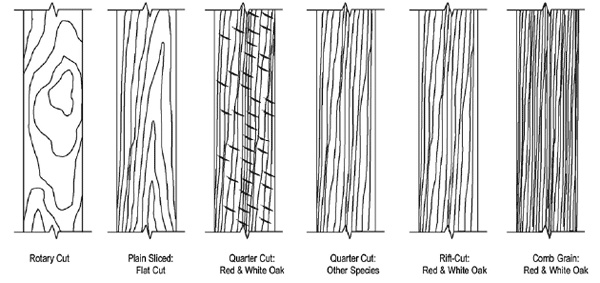
Face Veneer Cuts
The way in which a log is cut, in relation to the annual growth rings, determines the appearance of veneer. The beauty of veneer is in the natural variations of texture, grain, figure, color, and the way it is assembled on a door face.
Face veneers will have the natural variations in grain inherent in the species and cut. Natural variations of veneer grain and pattern will vary from these illustrations.
Rotary
This cut follows the log’s annual growth rings, providing a general bold random appearance.
Plain Sliced: (Flat Cut)
Slicing is done parallel to a line through the center of the log. Cathedral and straight grained patterns result. The individual pieces of veneer are kept in the order they are sliced, permitting a natural grain progression when assembled as veneer faces.
Quarter Cut
A series of stripes is produced. These stripes vary in width from species to species. Ray fleck (flake) is a characteristic of this cut in red and white oak.
Rift-Cut (only in Red & White Oak)
The cut slices slightly across the medullary rays, accentuating the vertical grain and minimizing the ray fleck (flake). Rift grain is restricted to red and white oak.
Comb Grain (only in Red & White Oak)
Limited availability. This is a rift-cut veneer distinguished by the tightness and straightness of the grain along the entire length of the veneer. Slight angle in the grain is allowed. Comb grain is restricted to red and white oak. There are occasional cross bars and ray fleck (flake) is minimal.
Door Face Veneer Characteristics - Ash, Beech , Birch, Maple and Poplar
Note: When specifying NATURAL, veneers contain unlimited amounts of sapwood and/or heartwood.
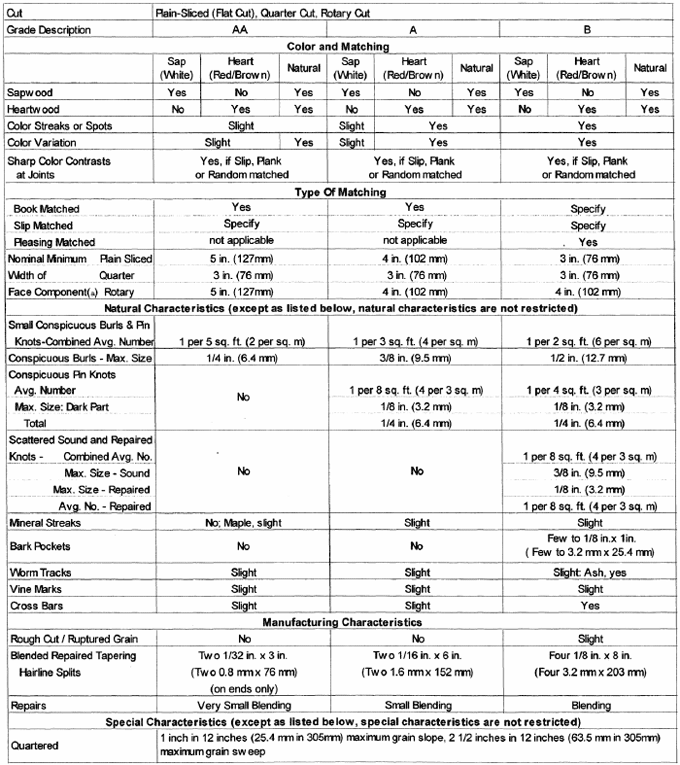
Unfilled worm holes, open splits, open joints, open bark pockets, shake or doze not allowed in above grades.
Notes:
a. Outside components w ill be a different size to allow for edge trim loss and certain types of matching.
b. American or European
Door Face Veneer Characteristics - African and Honduras Mahogany, Anegre, Makore, Sapele
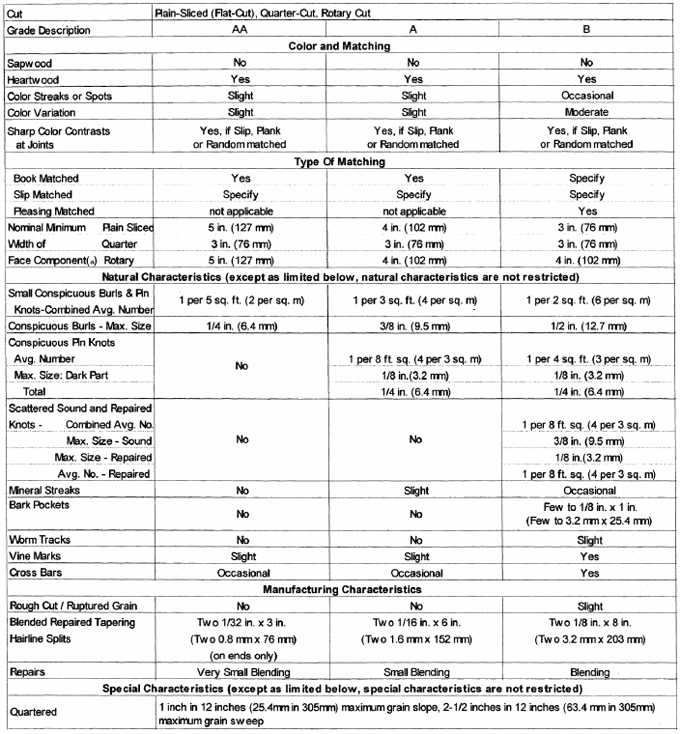
Unfilled worm holes, open splits, open joints, open bark pockets, shake or doze not allowed in above grades.
Notes:
a. Outside components w ill be a different size to allow for edge trim loss and certain types of matching.
Door Face Veneer Characteristics - Red and White Oak
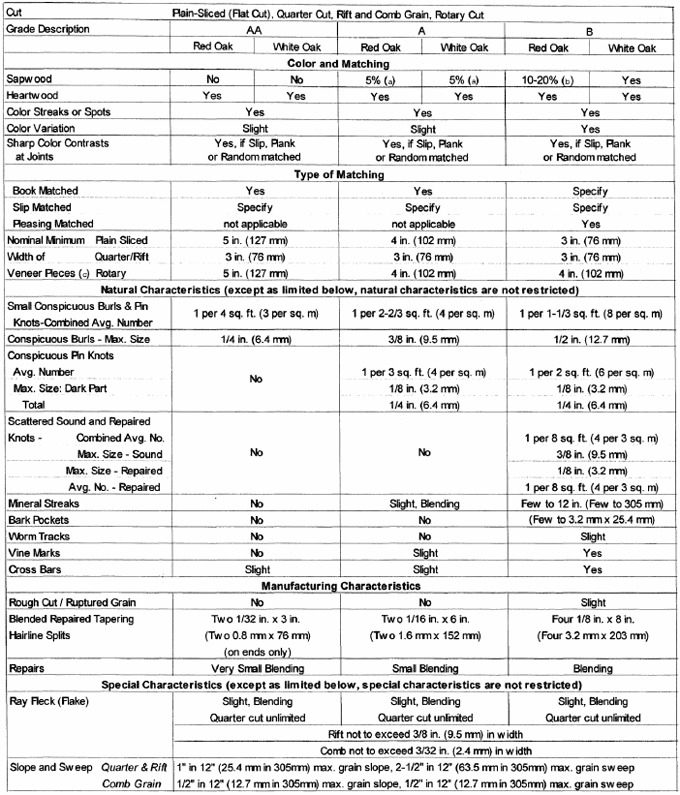
Unfilled worm holes, open splits, open joints, open bark pockets, shake or doze not allowed in above grades.
Notes:
a. Sap is permitted in rotary only unless otherwise specified.
b. 10% sap is permitted in rift, comb, quartered and plain sliced, 20% sap allowed in rotary.
c. Outside components w ill be a different size to allow for edge trim loss and certain types of matching.
Door Face Veneer Characteristics – Pecan and Hickory
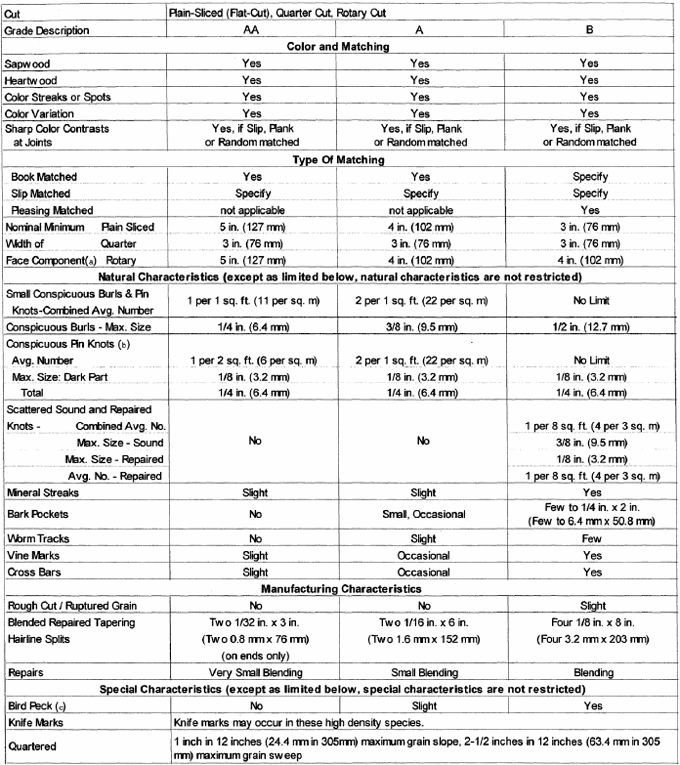
Unfilled worm holes, open splits, open joints, open bark pockets, shake or doze not allowed in above grades.
Notes:
a. Outside components w ill be a different size to allow for edge trim loss and certain types of matching.
b. For Pecan and Hickory, conspicuous pin knots means sound knots 1/4 in. (6.4 mm) or less in diameter with dark centers larger than 1/16 in. (1.6 mm). Blending pin knots are sound knots 1/4 in. (6.4 mm) or less in diameter with dark centers 1/16 in. (1.6 mm) or less and are allowed in all grades of Pecan and Hickory.
c. To achieve a more rustic appearance, bird peck shall be specified.
Door Face Veneer Characteristics - Walnut and Cherry
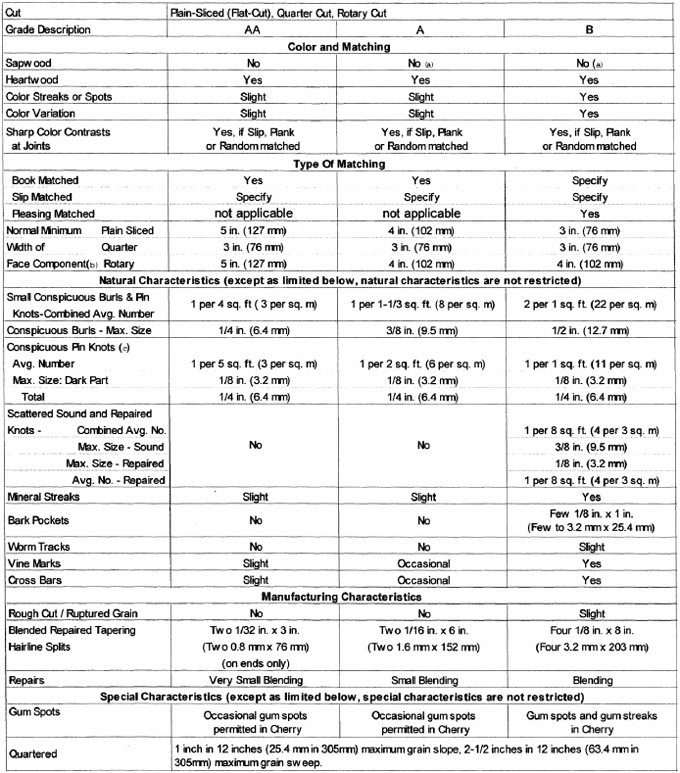
Unfilled worm holes, open splits, open joints, open bark pockets, shake or doze not allowed in above grades.
Notes:
a. Sap is allowed in grades A and B, how ever, the percentage must be agreed upon between buyer and seller.
b. Outside components w ill be a different size to allow for edge trim loss and certain types of matching.
c. For Walnut and Cherry, conspicuous pin knots means sound knots 1/4" (6.4mm) or less in diameter with dark centers larger than 1/16" (1.6mm). Blending pin knots are sound knots 1/4" (6.4mm) or less in diameter with dark centers of 1/16" (1.6mm) or less and are allowed in all grades of Walnut and Cherry
|